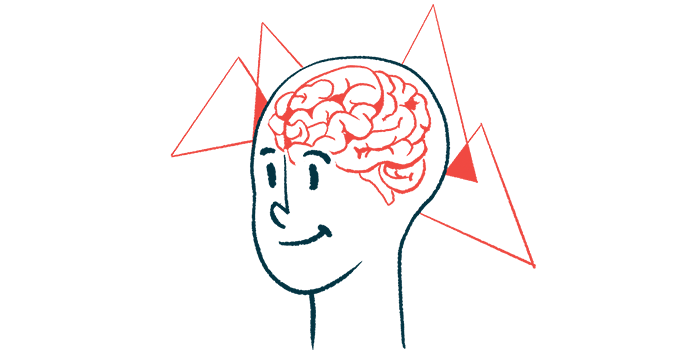3D Brain Organoids Capture Hallmarks ‘Only Seen in Patients’

Researchers developed “mini-brains” — midbrain-like organoids — that recapitulate for a first time two key Parkinson’s hallmarks in that organ: the formation of toxic protein clumps known as Lewy bodies and the loss of dopamine-producing neurons.
A combination of two known Parkinson’s risk factors — a deficiency of the beta-glucocerebrosidase (GCase) enzyme and overproduction of the alpha-synuclein protein, the main component of Lewy bodies — is also part of these organoids.
“These experiments are the first to recreate the distinctive features of Parkinson’s disease that we see only in human patients,” Hyunsoo Shawn Je, PhD, one of the study’s senior co-authors and an associate professor at the Duke-NUS Medical School, in Singapore, said in a university press release.
“We have created a new model of the pathology involved, which will allow us to track how the disease develops and how it might be slowed down or stopped,” Je added.
The study, “Lewy Body–like Inclusions in Human Midbrain Organoids Carrying Glucocerebrosidase and α-Synuclein Mutations,” published in the journal Annals of Neurology.
Developing cellular and animal models that closely resemble the features and underlying mechanisms of human neurodegenerative diseases is essential for identifying therapeutic targets and approaches.
Parkinson’s disease is characterized by the loss of dopamine-producing (dopaminergic) neurons in the substantia nigra, a region in the midbrain involved in the control of motor function. Dopamine is a major neurotransmitter, or chemical messenger, that allows for communication between neurons.
Loss of these nerve cells is thought to be triggered mainly by the formation and toxic buildup of Lewy bodies, aggregates composed mainly of alpha-synuclein, a protein abundant in the brain and thought to help regulate nerve cell function and communication.
While research in Parkinson’s has largely relied on mouse models, these animals do not reproduce all major disease hallmarks.
“Crucial PD pathologies are largely absent in both transgenic and knockin/knockout mouse genetic models” of Parkinson’s, the researchers wrote.
Specifically, these animal models “do not show the progressive and selective loss of neurons that produce the neurotransmitter dopamine, a major feature of Parkinson’s,” said Ng Huck Hui, PhD, another co-senior study author and the executive director of the Genome Institute of Singapore.
“Another limitation is that experimental mouse models … do not develop characteristic clumps of proteins called Lewy bodies, which are often seen in the brain cells of people with Parkinson’s disease and a type of progressive dementia known as Lewy body dementia,” Hui added.
These researchers, working with colleagues, developed tiny, human midbrain-like organoids that mimic both the Lewy body formation and dopaminergic neuron loss seen in patients.
Their 3D mini-brains, grown in lab dishes, are composed of different types of brain cells that can more fully capture the properties and cellular interactions of the human brain than can animal models.
About the size of a pea, the organoids were grown from genetically modified human stem cells and induced pluripotent stem cells (iPSCs) derived from Parkinson’s patients into a bundle of neurons and other cells found in the brain.
Taken from adult skin or blood samples, iPSCs can mature into any cell type, and when derived directly from patients they can be used as cellular models that mimic a disease’s genetic and clinical diversity.
The stem cells used carried Parkinson’s genetic risk factors: mutations in the GBA1 gene, which provides the instructions to produce the GCase enzyme, and/or triplication of the SNCA gene, which codes for alpha-synuclein.
GCase is an important component of cells’ recycling factories, and its absence or faulty activity causes toxic molecules like alpha-synuclein to accumulate inside cells, likely contributing to neurodegeneration. SNCA triplication leads to the production of unusually high levels of alpha-synuclein that promote its aggregation.
Midbrain organoids that were derived from stem cells and genetically modified to either have GCase deficiency or overproduce alpha-synuclein showed both dopaminergic neurons loss and the accumulation of insoluble alpha-synuclein aggregates, but not Lewy bodies.
These hallmark toxic clumps, along with dopaminergic neuron loss, were only observed when the organoids were derived from stem cells carrying both disease risk factors.
While further studies are needed to understand why these two risk factors must be combined for Lewy bodies to form in the midbrain organoids, this model closely recapitulates Parkinson’s major features and has the potential to be a powerful research tool.
“Our model can be used to further elucidate the underlying mechanisms of progressive [Lewy body] formation as well as the selective vulnerability of [dopaminergic] neurons and to screen potential therapeutic agents for [Parkinson’s disease],” the researchers wrote.
Mini-brains with GBA mutations are “also highly relevant as we have several of these genetic mutation carriers locally,” said Tan Eng King, PhD, a co-senior study author and the deputy medical director of academic affairs at the National Neuroscience Institute, in Singapore.
The team is now using these organoids to assess how and why Lewy bodies form in human brain cells, and to screen for therapies that might stop disease progression.







